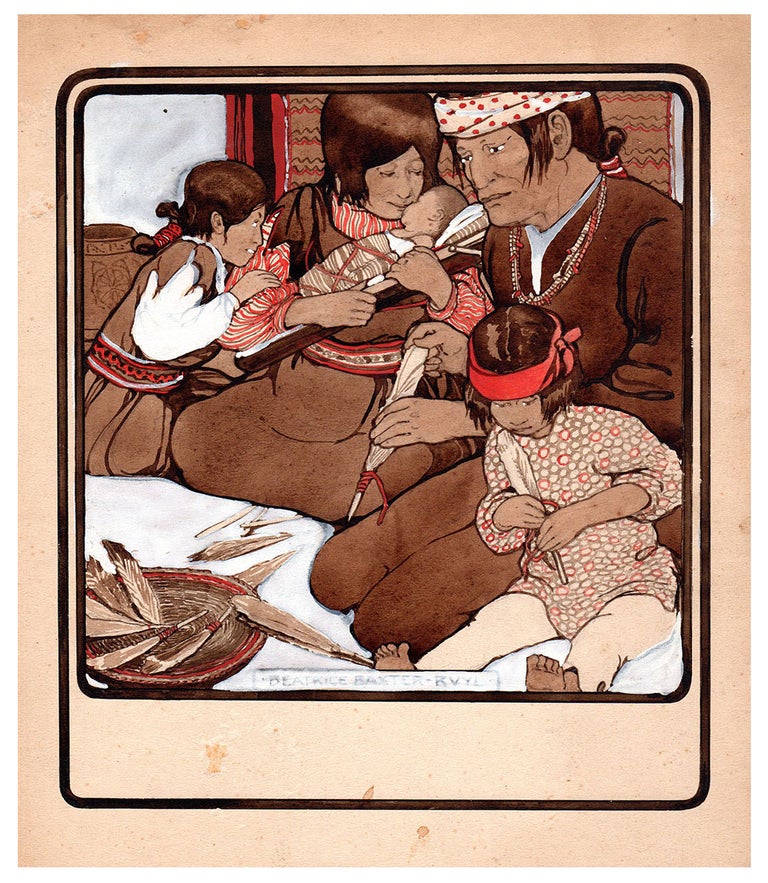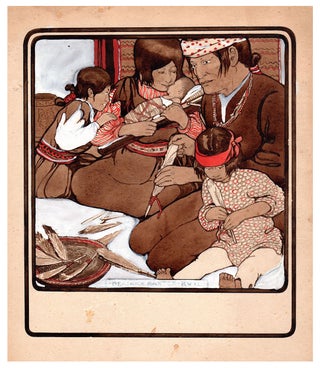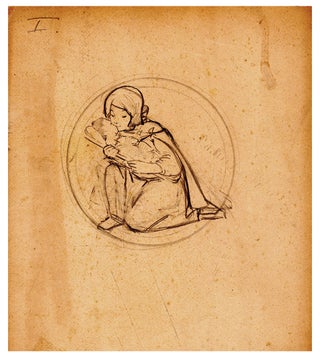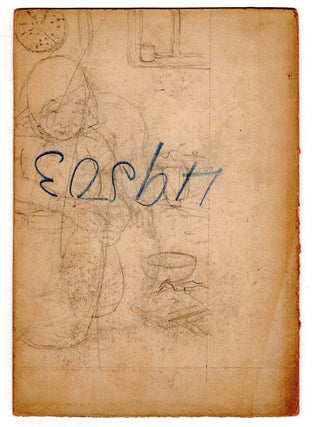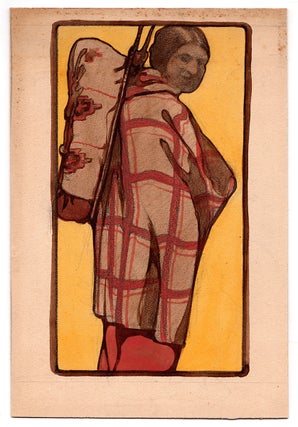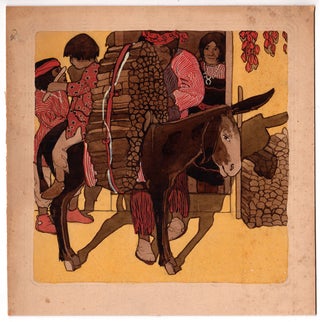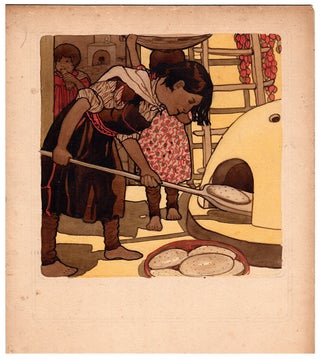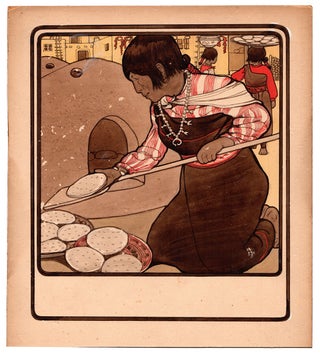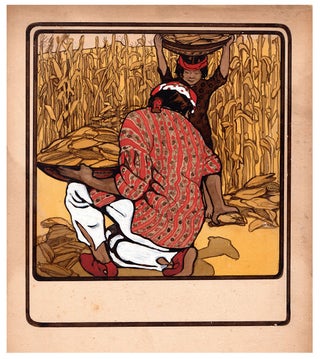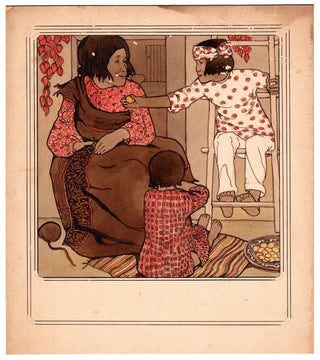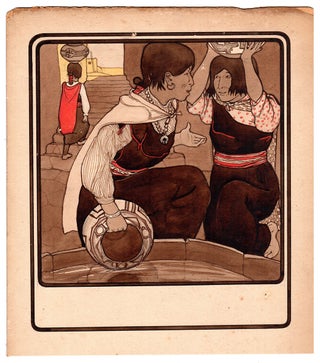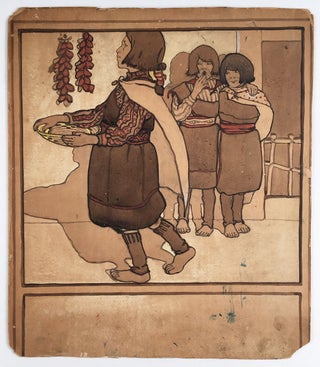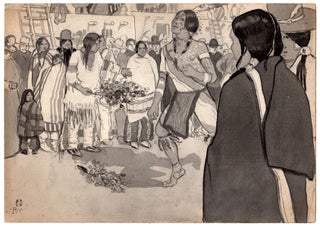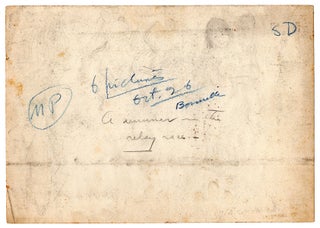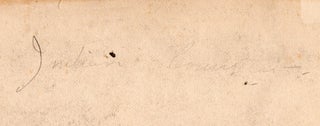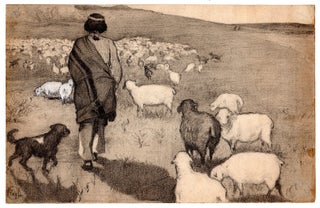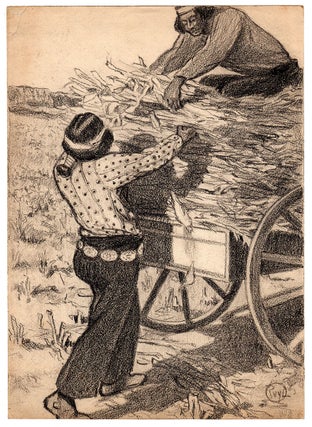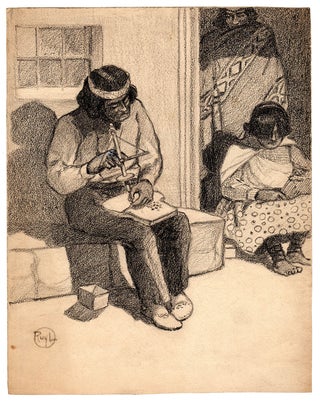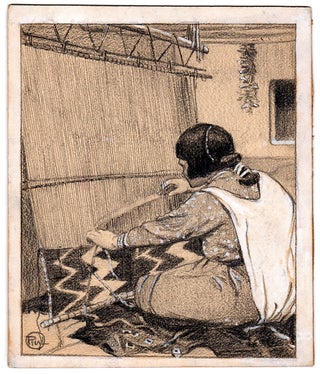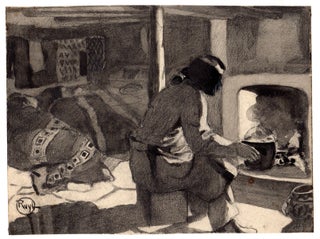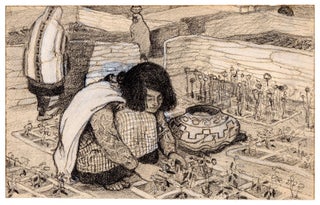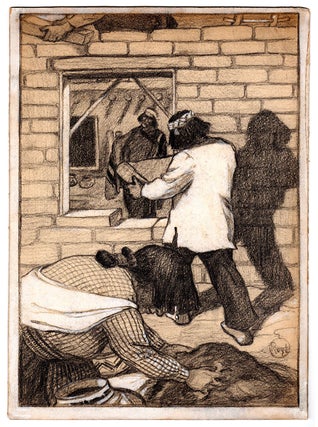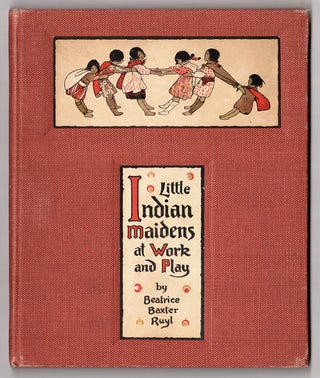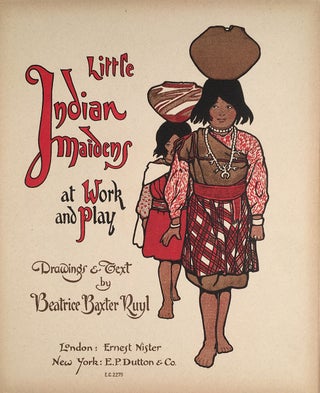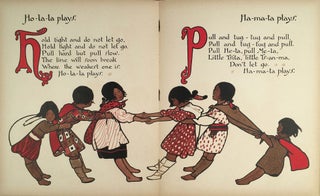Twenty-Five Original Illustrations of the Zuni People.
Zuni Pueblo, New Mexico, circa 1902. 14 watercolors on paperboard, 9.125” x 6” to 11.125” x 9.875” plus margins; 3 wash drawings and 8 graphite and charcoal drawings, some heightened with white gouache, 6.25” x 10” to 14” x 10” plus margins (in some cases), some on paperboard, others on un-mounted sheets; 3 graphite sketches on versos. A total of 25 illustrations excluding the sketches, 10 of which are signed or monogrammed. A delightful collection of original illustrations of the Zuni people by a couple who traveled to the Zuni Pueblo in the first decade of the twentieth century. Offered here are two sets of illustrations of the Zuni people, the first of which consists of fourteen watercolors and one wash drawing by Beatrice Baxter Ruyl. Evidently created for a children’s book that was never published, these wonderfully sympathetic illustrations primarily depict the Zuni at work, often in close-knit family groups, shearing sheep, planting, processing corn, baking flatbread, gathering water, and so on. The watercolors are very much in the Arts & Crafts style of illustration, with its emphasis on flattened, interlocking forms, here within a double-ruled border, with an extension below for text. Ruyl provided a caption for just one of the watercolors: “This is the Good Father Who Shears the Wooly Sheep,” which gives some sense of what she intended.
Others, especially the drawings, portray such additional subjects as painted Zuni men dancing; the figure of a man seated before a fire in his house while his family lies in bed nearby; the construction of a building. Several of the drawings have titles or notes on the verso. The drawing of Zuni men dancing is inscribed in the lower right corner “Ruyl. Zuni, N.M.” and has a note on the verso reading “Painted warriors keep up for hours the dance in the estufa; or the Indian name ‘Kiwitsinê’ –”. In 1909 Ruyl published Little Indian Maidens at Work and Play, (Dutton and Nister), the illustrations for which clearly relate to the same visit to the Zuni Pueblo, although none of the illustrations included here were used in the book, which seems to have been a somewhat separate project focused on the lives of Zuni children. A copy of Little Indian Maidens (lacking a leaf) is included with this collection. Beatrice Baxter Ruyl (1879-1961) was born in Denver, Colorado, the daughter of Joseph Nickerson and Edith (Shedd) Baxter. She studied at the Museum School in Boston and later in Paris at the Académie Colarossi and with Edward Steichen (1900-1901). She and her husband, artist Louis Ruyl, lived in Hingham, Mass. and summered in Ogunquit, Maine where she was a member of the Ogunquit Art Association and a student and friend of its leading light, painter Charles Woodbury, whose son the Ruyl’s daughter Ruth would later marry. In addition to Little Indian Maidens at Work and Play, Ruyl wrote and/or illustrated Six Giants and a Griffin, and Other Stories (1903), Little Mildred’s Secret (1904), Bobby and Bobbinette (1904), The Moon Party (1904), and The Zodiac Birthday Book (1910). She also worked as an illustrator for The Boston Herald. Ruyl and her husband were friends with Pictorialist photographers F. Holland Day and Gertrude Käsebeir. A strikingly beautiful woman, she was photographed by both. A number of their photographs of her can be viewed online, at moma.org, for instance, or www.rijksmuseum.nl, or www.tumblr.com. The Ruyls visited the Zuni Pueblo in 1902—a relatively early date for a woman artist from the east to visit one of the New Mexico pueblos. Although working more as a visiting illustrator, Ruyl can nevertheless be seen as a forerunner of the better-known women artists who arrived in New Mexico in the succeeding decades, such as Catharine Critcher, Henriette Wyeth, Louise Crow, Dorothy Brett and Georgia O’Keefe. With respect to the era in which she was working, Ruyl’s Zuni Pueblo illustrations have, at least in terms of subject matter and the market for which they were intended, much in common with those of Edwin Willard Deming for such works as Indian Child Life (1899), Little Indian Folk (1899) and Little Red Folk (1899), although they are, of course, stylistically very different. A charming and intimate series of illustrations by a woman artist depicting the Zuni people in the early years of the twentieth century. REFERENCES: Leonard, John William, et al. “Ruyl, Beatrice Baxter” in Who’s Who in America, Vol. 7 (1913), p. 1815; Beatrice Baxter Ruyl at askart.com. For background on women artists in New Mexico (though with no mention of Ruyl), see: Trenton, Patricia. Independent Spirits : Women Painters of the American West, 1890-1945 (Berkeley, 1995), pp. 153-164. CONDITION: A few watercolors with some surface loss, which could easily be remedied by a competent conservator, occasional foxing and other minor discolorations, one watercolor more heavily worn at edges with two cracks into image; one drawing with loss to upper and lower right corners.
Item #4914
Sold


